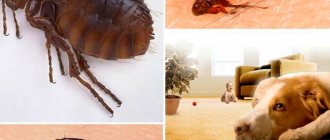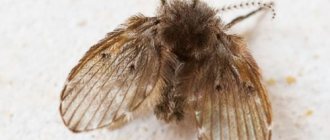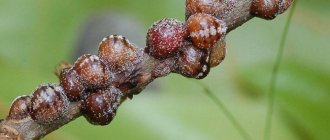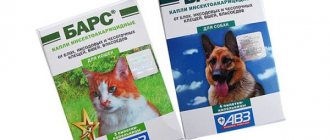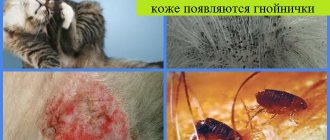The term “bed fleas,” which is widely used in everyday life, is not a scientific definition of blood-sucking insects that parasitize the body of animals and humans. This is a collective name that unites several different species of the extensive flea family.
The use of such a specific epithet as bedding is due to the peculiarities of the localization of small, ubiquitous insects. In search of a source of food, they can climb into beds and wardrobes.
Almost all types of fleas that consider humans as a potential source of food have identical habits and life cycle characteristics, but visual differences between representatives of individual types can only be determined using a microscope.
How to deal with bed fleas, what control methods are effective and how to prevent their occurrence in the future? Let's look further.
How to get rid of it at home
Bed fleas can enter a living space in a variety of ways; most often, the carriers are animals with access to the street. There are a lot of means by which you can completely destroy uninvited guests, but before using any of them, it is important to carry out a number of certain measures.
Ignoring this rule will lead to a rapid restoration of the insect population.
So, before turning to insecticides that will help get rid of bed fleas, you must:
- Wash thoroughly with laundry soap, then boil the bed linen. If possible, it is advisable to dry it in the open air.
- Carry out a thorough cleaning of the room, also using laundry soap.
- If fleas are found in winter, it is advisable to completely freeze the room. To do this, open the windows and doors and leave the room like that for at least two to three hours. Turn off the heating first.
- If you have pets, you should treat them with flea repellents, and also put a special collar on your pet.
In order to completely get rid of linen fleas, you can treat the room with insecticides only after carrying out the procedures described above.
Traditional methods
It is unlikely that you will be able to get rid of bed fleas at home using traditional methods. However, grandmother's advice may well help protect your home from uninvited guests.
In order for flea larvae, as well as adult fleas, to avoid the home, it is recommended to hide small bouquets consisting of tansy, lavender branches, and common wormwood in secluded corners.
To prevent the appearance of insects on carpets or, for example, on a woolen sofa, it is recommended to thoroughly clean the surface using a brush lightly moistened with any essential oil, for example, orange, eucalyptus, pine needles.
A few fresh branches of pine needles in the house will not be superfluous, which it is also advisable to place in secluded places.
Chemical treatment of the apartment
But the most pressing question for anyone who is faced with such an unpleasant problem is the question of how to remove bed fleas using insecticides. The modern market offers the consumer a wide range of drugs that will help cope with any insects.
The most effective are:
- Preparations intended for the preparation of solutions: cucaracha, tsifox, cypermethrin.
- Aerosol agents: raid, battalion commander.
According to the instructions on the packaging of the insecticide, prepare an aqueous solution and then place it in a spray bottle. With an aerosol, everything is much simpler - just remove the lid. Next, carefully treat the entire room with the chosen product.
It is especially important to touch even the most secluded corners, since flea parasites are very small and may well be hidden, for example, in the cracks between baseboards, walls, and wallpaper joints.
After completing the treatment process, you should leave the apartment for at least five hours, after which everything should be thoroughly ventilated. In order to protect your own health, after treatment you should repeat wet cleaning using laundry soap.
Video
How to get rid of fleas in an apartment
Signs of poisoning and first aid
Fragrances mask the unpleasant odor of insecticides, but do not assume that the product is completely safe. Individual sensitivity to the components of the Reid product can lead to poisoning. Signs of intoxication are:
- muscle weakness;
- dizziness;
- abdominal pain;
- nausea and vomiting;
- headache.
Animals may experience muscle contractions, tremors of limbs, and drooling.
If signs of poisoning occur, wash with soap and soda solution. Rinse the nasal cavity and rinse the mouth. Take activated carbon or a weak solution of potassium permanganate. If signs of poisoning do not go away after a few hours, you should contact a medical facility.
Remedies for poisoning
Raid is effective against fleas and other arthropods, but its effectiveness against bedbugs is somewhat lower than that of other insecticides. This is evidenced by consumer reviews.
Spray Raid against fleas, reviews of which are mostly positive, enjoys well-deserved popularity, as it has a number of advantages over other means of fighting insects.
What do bed fleas look like?
In order not to make a mistake when choosing insecticides, it is important to know what a bed flea looks like. These skin parasites are very small, their body size does not exceed four millimeters.
Color can vary from yellowish to dark brown. There are no wings. The insect's body is protected by a durable shell.
A distinctive feature of fleas is the ability to jump to considerable heights - up to one and a half meters. The food sources of parasites are warm-blooded animals; they bite humans and animals.
It is important to remember that fleas are carriers of serious infectious diseases, which is why when parasites appear in your home, you should immediately take measures to destroy them.
Danger of insects
Earth flea bites are far from harmless. On the contrary, they pose a great danger to humans. First of all, it is severe itching and allergic reactions. Even anaphylactic shock cannot be ruled out. Bite wounds can fester and eczema forms in their place. Infection is also possible .
In addition, fleas carry dangerous, fatal diseases . These are typhus, plague, hepatitis, encephalitis, salmonellosis. Fleas are also carriers of helminths: cucumber tapeworm, nematodes, and toxocara. Added to this is sleep disturbance due to fear of bites, the inability to invite guests, and, as a result, extreme stress.
In case of bites, you should never
scratch them to avoid infection. First, the wounds should be washed with soap and water.
Then treat with an antiseptic, for example Chlorhexidine. To eliminate swelling and itching, use antigestamines and ointments. In particularly serious cases, you should consult a doctor. For animals, flea bites are no less dangerous. Small dogs or kittens can even die from parasite bites. Animals scratch itchy areas and can cause infection.
Favorite Habitats
The bed flea chooses certain secluded places as its favorite habitats. The most important aspects for the existence of insects are: warmth, low humidity.
Bed fleas can be found on woolen carpets, bedding, and other similar surfaces. There the parasites spend time between meals, lay eggs, and hide.
Bed
Fleas appear especially often in the bed if the linen is changed irregularly and the room is practically not ventilated. Lack of wet or dry cleaning, accumulation of dust, dirt, abundance of various carpets, capes - almost ideal conditions for the appearance of fleas in the bed.
Detecting the presence of insects is easy - on the laundry you can find not only the parasites themselves, but also dark grains of sand - the result of their vital activity.
Mattress
Linen fleas are often found in large numbers in household bedding that is not regularly cleaned, for example, in mattresses, bedside crannies, and under the bed. Since parasites are small in size, they can be difficult to detect.
As a rule, this becomes clear from the bites that appear on the body of household members. When treating the bedroom, it is important to disinfect the mattresses; this will help prevent the reappearance of insects.
Sofa
Fleas in the sofa are a fairly common phenomenon that is often noted by pet owners. Parasites appear there especially often if, for example, a cat or dog has chosen a sofa for relaxation.
To get rid of sofa fleas, it is important to spray this piece of furniture as thoroughly as possible, and then put bunches of aromatic herbs, such as lavender, in the laundry box.
Use of traditional methods of extermination
If you do not want to use chemicals, you can use folk recipes. Essential oils are very effective because they kill parasites with their scent. Most often people turn to for help:
- tansy;
- eucalyptus;
- wormwood;
- tea tree.
You should prepare decoctions from such plants and sprinkle them on the walls of the sofa; in addition, you can use dry plant branches laid out under the bed. Eucalyptus fragrance must be mixed with ammonia, then added to water and the floors washed with this solution. In addition, fleas cannot stand the smell of citrus fruits. For this reason, it is recommended to spray your sofa with orange or lemon essential oil.
Peppermint is allowed. You need to take 20 g of fresh crushed plant and spread it under the sofa. In addition, you can boil mint, infuse it and spray it on the bed. Particular attention should be paid to the mattress, since most often this is where fleas accumulate.
Turpentine and kerosene are considered effective remedies, although these substances have a pungent odor. It is necessary to use the drug based on them according to the following scheme:
- pour turpentine into a bowl of hot water;
- take a brush and treat the sofa;
- The procedure must be repeated daily until the fleas disappear.
There is another old but effective method: you need to take tobacco and pour it on the sofa, leave it for 3-4 hours, and then vacuum it. Experts recommend using a solution of salt and soda. You need to take these food products (200 g each), add 1-2 tbsp. l. water, mix the ingredients thoroughly in a plate, and then treat the sofa, toys and other fleecy surfaces with the resulting mixture.
At the end of the procedure, you need to vacuum the disinfected areas and, if necessary, repeat the technology after 2-3 days if the fleas do not disappear.
Where do they come from?
Almost every housewife who is faced with the problem of parasites wonders where bed fleas come from.
Parasites can enter the home with pets, when purchasing used furniture or other household items, on the soles of outdoor shoes, when purchasing clothes, and also food.
The likelihood of bloodsuckers appearing even when visiting guests.
